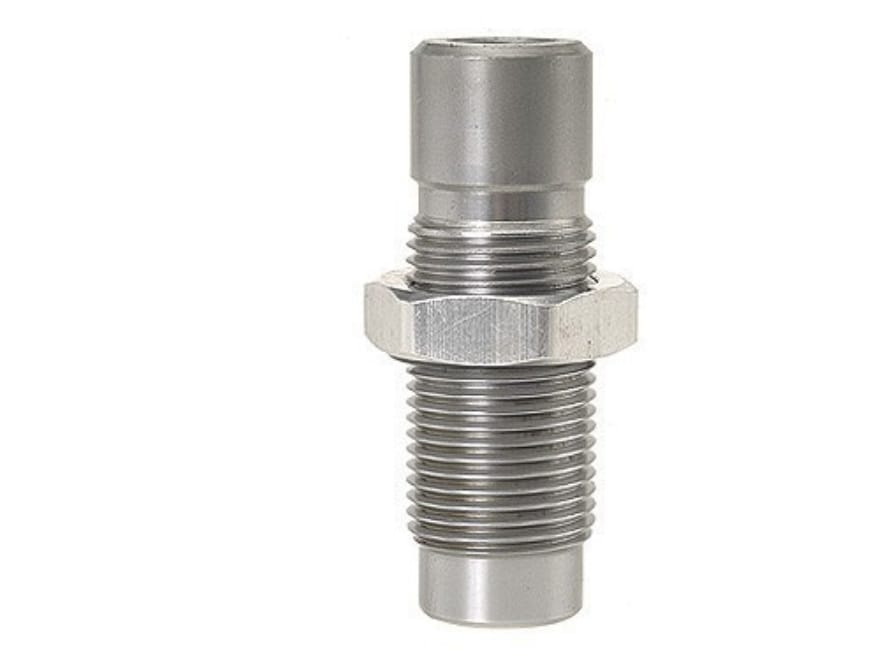BHuij
Active Member
I have been casting and loading 9mm bullets for my M&P 9 for years now. After the standard initial goose chase of "why am I still getting leading", I figured out what worked:
1. My OEM barrel slugged at .357" in the grooves using a micrometer. I sized bullets to .3585" after powder coating.
2. The stock expander plug in my Lee powder-through expander die wasn't opening the case mouth enough to avoid swaging the bullet upon seating. I swapped it out for a .38 S&W expander plug as recommended in many forum posts on the subject, and the cases no longer swaged my bullets. I also made sure my seating die was set up such that it didn't do any crimping, ONLY seating.
3. The factory crimp die has the carbide ring that squishes everything back down to SAAMI spec, once again resulting in undersize bullets that were leading my bore. After unsuccessfully trying for a while to knock out the carbide ring so I could still use the crimp die, I finally gave up. I found a sweet spot with my expander die where I could get bullets seated without difficulty, but once they were seated, they were firm and I couldn't push them in any further with finger pressure. So that's how I loaded my last ~15,000 rounds or so. No issues.
Here's the deal. I just put in an Apex match grade barrel in the gun. After noticing that my normal handloads using .3585" bullets were having a hard time chambering, I slugged the bore and found that the groove diameter is just a hair larger than .355". So I sized several bullets down to .356" and loaded them. I had to adjust my expander die, as it was too aggressive for the slightly smaller bullets, and tried to find a sweet spot where I could seat the bullets without trouble, but wasn't worried about having not enough neck tension.
I'm not sure this sweet spot exists. About 60% of the bullets were shaving a little bit upon seating. About 20% felt very little tension as they were being seated; much less than I'm used to (although they also did not budge when I pushed on them with my thumbs after seating). The remaining 20% seemed normal.
Everything chambered normally and I had zero problems at the range that night. The new barrel is absolutely grouping significantly better than the OEM one. All the charges I tested shot basically the same, so I'm going to stick with the 4gr of W231 I've been using for years.
Is there some solution here that I could implement to get back to a place where I'm not simultaneously too tight and too loose on the case mouth? Or should I just bell the mouth a little more and then find a crimp die solution that doesn't swage my bullets back down?
Edit: Lee taper crimp die without the carbide ring is on sale right now. This is a small cost to pay to solve my problem, will this die allow me to get good neck tension from a belled case mouth without swaging my bullet?

 www.midwayusa.com
www.midwayusa.com
1. My OEM barrel slugged at .357" in the grooves using a micrometer. I sized bullets to .3585" after powder coating.
2. The stock expander plug in my Lee powder-through expander die wasn't opening the case mouth enough to avoid swaging the bullet upon seating. I swapped it out for a .38 S&W expander plug as recommended in many forum posts on the subject, and the cases no longer swaged my bullets. I also made sure my seating die was set up such that it didn't do any crimping, ONLY seating.
3. The factory crimp die has the carbide ring that squishes everything back down to SAAMI spec, once again resulting in undersize bullets that were leading my bore. After unsuccessfully trying for a while to knock out the carbide ring so I could still use the crimp die, I finally gave up. I found a sweet spot with my expander die where I could get bullets seated without difficulty, but once they were seated, they were firm and I couldn't push them in any further with finger pressure. So that's how I loaded my last ~15,000 rounds or so. No issues.
Here's the deal. I just put in an Apex match grade barrel in the gun. After noticing that my normal handloads using .3585" bullets were having a hard time chambering, I slugged the bore and found that the groove diameter is just a hair larger than .355". So I sized several bullets down to .356" and loaded them. I had to adjust my expander die, as it was too aggressive for the slightly smaller bullets, and tried to find a sweet spot where I could seat the bullets without trouble, but wasn't worried about having not enough neck tension.
I'm not sure this sweet spot exists. About 60% of the bullets were shaving a little bit upon seating. About 20% felt very little tension as they were being seated; much less than I'm used to (although they also did not budge when I pushed on them with my thumbs after seating). The remaining 20% seemed normal.
Everything chambered normally and I had zero problems at the range that night. The new barrel is absolutely grouping significantly better than the OEM one. All the charges I tested shot basically the same, so I'm going to stick with the 4gr of W231 I've been using for years.
Is there some solution here that I could implement to get back to a place where I'm not simultaneously too tight and too loose on the case mouth? Or should I just bell the mouth a little more and then find a crimp die solution that doesn't swage my bullets back down?
Edit: Lee taper crimp die without the carbide ring is on sale right now. This is a small cost to pay to solve my problem, will this die allow me to get good neck tension from a belled case mouth without swaging my bullet?

Lee Taper Crimp Die 9mm Luger
The Lee Taper Crimp Die is hardened steel designed to overcome crimp problems caused by poor die design. These dies offer little or no advantage when...
Last edited:

